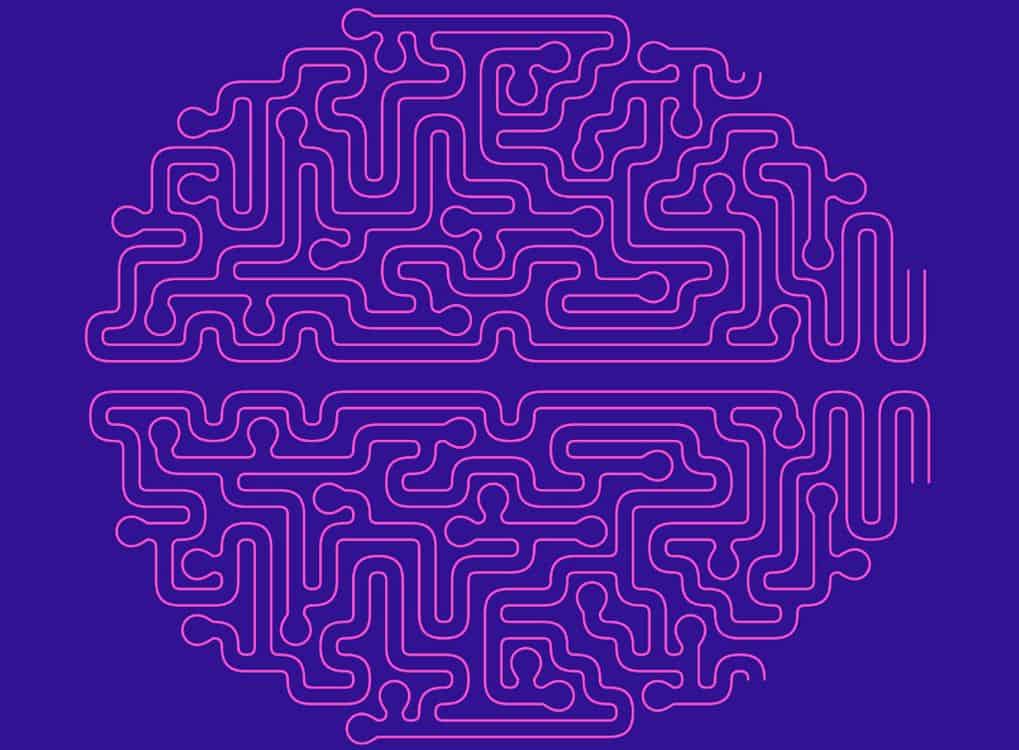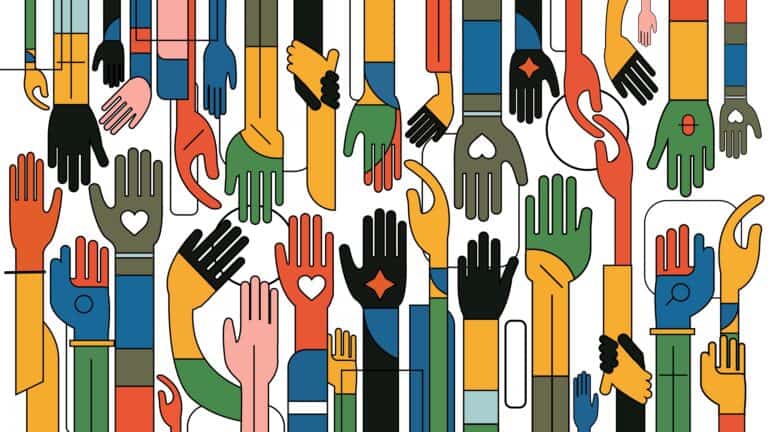Education: The Big Picture
In massage education, we often use teaching methods passed to us from our teachers who learned them from their teachers. Where did these methods originate?
Since ancient times humans have sought to understand intelligence and how people learn. The earliest cultures, including the Egyptians, Mesopotamians, Greeks, and Romans, understood learning as a critical ingredient in survival. They recognized that people who were able to adapt to changing circumstances and learn new skills could recover from misfortunes and acquire wealth. People with “learning” were better able to lead armies, maintain societal equilibrium, and hold onto thrones.
Learning theory (ideas about how people learn) and education theory (ideas about facilitating learning in others) emerge as important aspects of Greek philosophy and psychology. By the 1800s, theorists are developing different views about learning and teaching. Groups of theorists working from the same general beliefs and values produced compatible theories. Today, we understand these learning and education theories as components of different education paradigms.

Education Paradigms: Education paradigms are general ideas about how learning and teaching work. While we could trace our instructional methods to a particular paradigm, we often find overlapping methods and features. For example, a competency-based curriculum (if you know what it is, then you understand why I’ve used a picture of a person with a clipboard!) comprises ideas and methods from both behaviorism and cognitivism.
Education Paradigms
An education paradigm is a general idea of how learning and teaching work. Each paradigm of education has a different perspective on the purpose of education, what it means to learn, the roles of students and instructors, what knowledge, skills, behaviors, and values are important, the methods used to teach students, and the methods used to assess students.
There are currently four widely accepted education paradigms. These paradigms are known as behaviorism, cognitivism, constructivism, and humanism. A fifth paradigm, called education neuroscience, has gained traction over the last 30 years as scientists recognize the biological basis for learning and seek to enhance natural learning processes.
Some people view connectivism as an education paradigm to recognize the importance of technology in modern learning. However, critics suggest that connectivism is not a paradigm or a learning theory but rather a curriculum emphasis that seeks to promote the effective use of technology in education.
Education paradigms are constantly evolving and display some overlapping beliefs, methods, and features. Thus, at any given point in history, multiple paradigms of education are in operation in curricula. In fact, we can point to examples of every education paradigm in methods we commonly use in massage classrooms.
Learning Theories
A learning theory is a hypothesis of how people learn. Learning theories are abstract frameworks that describe how information is received, processed, connected to other data, retained, used to build knowledge hierarchies, used to develop skill-sets, and applied to achieve goals or solve problems.
Some learning theories seek to explain how learning happens in the brain and body and strive to illuminate how educational strategies can enhance knowledge and skill acquisition. Other learning theories don’t attempt to describe learning mechanisms but focus instead on how people prefer to consume education or the types of environments and instructor characteristics that lead to better learning outcomes.
To call these models “learning theories” is confusing. Probably, we should call them education theories. However, I’ve preserved the traditional categorizations of learning theory versus education theory in these blog posts for clarity.
Like education paradigms, learning theories share many overlapping beliefs, methods, and features and often evolve. Learning theories influence education theories.

LEARNING THEORIES: Learning theories seek to explain how learning happens in the brain and body. They strive to illuminate how educational strategies can enhance knowledge and skill acquisition.
Education Theories
Education theories (also called instructional models) are ideas about how people facilitate learning for others. Education theories often define features of the learning environment, the desired attitudes and behaviors of the instructor, how classes are structured, the types of learning experiences used to teach content, the sequence of learning experiences, and the methods used to assess learners. Like paradigms and learning theories, education theories are constantly evolving, overlap in ideas and approaches, and may use similar instructional strategies. Education theories influence the choices made by instructional designers.
Curriculum
The formal definition of the term curriculum is “the subjects comprising a course of study.” However, educators typically use this term as slang, referring to the structure and sequence of subjects and topics, the materials created to support the teaching process, and the materials developed to facilitate the learning process. With this understanding, the course syllabi, learning outcomes, lesson plans, learning objectives, learning experiences, handouts, assignments, and assessments as components of the curriculum.
Instructional Design
Instructional design (also called curriculum design) is the thoughtful formation of learning outcomes, learning objectives, learning experiences, and instructional materials and their organization into an effective sequence that promotes knowledge and skill acquisition.
An important aspect of instructional design is the development of compelling learning experiences. A learning experience is the direct observation of an event or the participation in an event that causes learning to occur. Instructional designers (often instructors) plan classroom events that reliably support learners in the process of constructing knowledge, skills, attitudes, values, and behaviors so they can meet learning objectives and program outcomes. Instructional design is used to plan classes, modules, units, courses, and programs.
Instructional Systems Design
Instructional systems design (also called instructional design) is a systematic process used to develop educational programs that are effective and reliable. Numerous models exist with overlapping processes. Some models are based firmly on a particular educational paradigm, learning theory, and education theory, while others are more eclectic.
Massage Education
All of the strategies we use in our massage classrooms come from established learning and education theory. Some massage programs are probably rooted in one particular education paradigm, but most are eclectic, drawing methods from various places. We’ll examine different education theories and paradigms in upcoming blog posts to enhance our teaching and classroom environments.
- Albanese, M., & Mitchell, S. Problem-based learning: A review of the literature on its outcomes and implementation issues. AcademicMedicine, 68, 52–81. 1993.
- Ashworth, Frank, Gabriel Brennan, Kathy Egan, Ron Hamilton, and Olalla Sáenz. Learning Theories and Higher Education. Vol. 2, 2004.
- Ausubel, D., Novak, J., & Hanesian, H. (1978). Educational psychology: a cognitive view(2nd ed.). New York: Holt, Rinehart & Winston.
- Baum, William M. Understanding behaviorism: science, behavior, and culture. Wiley-Blackwell, 1994.
- Brown, A., & Campione, J. Guided discovery in a community of learners. In K. McGilly (Ed.), Classroom lessons: Integrating cognitive theory and classroom practice (pp. 229–270). Cambridge, MA: MIT Press. 1994.
- Bruner, J. (1990). Acts of meaning. Cambridge: Harvard University Press.
- Colliver, J. A. Effectiveness of problem-based learning curricula: Research and theory. Academic Medicine, 75, 259–266. 2000.
- Darrow, Suzanne. Connectivism Learning Theory: Instructional Tools for College Courses. A Thesis Submitted in Partial Fulfillment for a Master’s Degree in Education, Danbury, CT: Western Connecticut State University, 2009.
- Ertmer, P. A., Newby T. J. Behaviorism, cognitivism, constructivism: Comparing critical features from an instructional design perspective. Performance Improvement Quarterly, 6(4):50–72. 1993.
- Husen, T., and T. N. Postlethwaite. Constructivism in Education. In The International Encyclopedia of Education, 1:162-163. Oxford/New York: Pergamon Press, 1989.
- Kop, Rita, and Adrian Hill. Connectivism: Learning Theory of the Future or Vestige of the Past? International Review of Research in Open and Distance Learning 9, no. 3: 1-13. October 2008.
- Liu, C. H, and R. Matthews. Vygotsky’s philosophy: Constructivism and its criticisms examined. International Education Journal 6, no. 3: 386–399. 2005.
- Mayer, R. Should there be a three-strikes rule against pure discovery learning? The case for guided methods of instruction. American Psychologist, 59, 14–19. 2004.
- Moreno, R. Decreasing cognitive load in novice students: Effects of explanatory versus corrective feedback in discovery-based multimedia. Instructional Science, 32, 99–113. 2004.
- Roblyer, M. D., Edwards, J., & Havriluk, M. A. Integrating educational technology into teaching (2nd ed.). Upper Saddle River, NJ: Prentice-Hall. 1997.
- Siemens, G. Connectivism: A Learning Theory for the Digital Age. 2005.
- Sjoberg, S. Constructivism and learning. In Sjoberg, S., E. Baker, B. McGaw, and P. Peterson. International Encyclopedia of Education 3rd Edition, Oxford: Elsevier, 2007.
- Sweller, J. Cognitive load during problem solving: Effects on learning. Cognitive Science, 12, 257–285. 1988.
- Tuovinen, J. E., & Sweller, J. A comparison of cognitive load associated with discovery learning and worked examples. Journal of Educational Psychology, 91, 334–341. 1999.
- Watson, John B. Psychology as the Behaviorist Views it. Psychological Review 20: 158-177. 1913.


